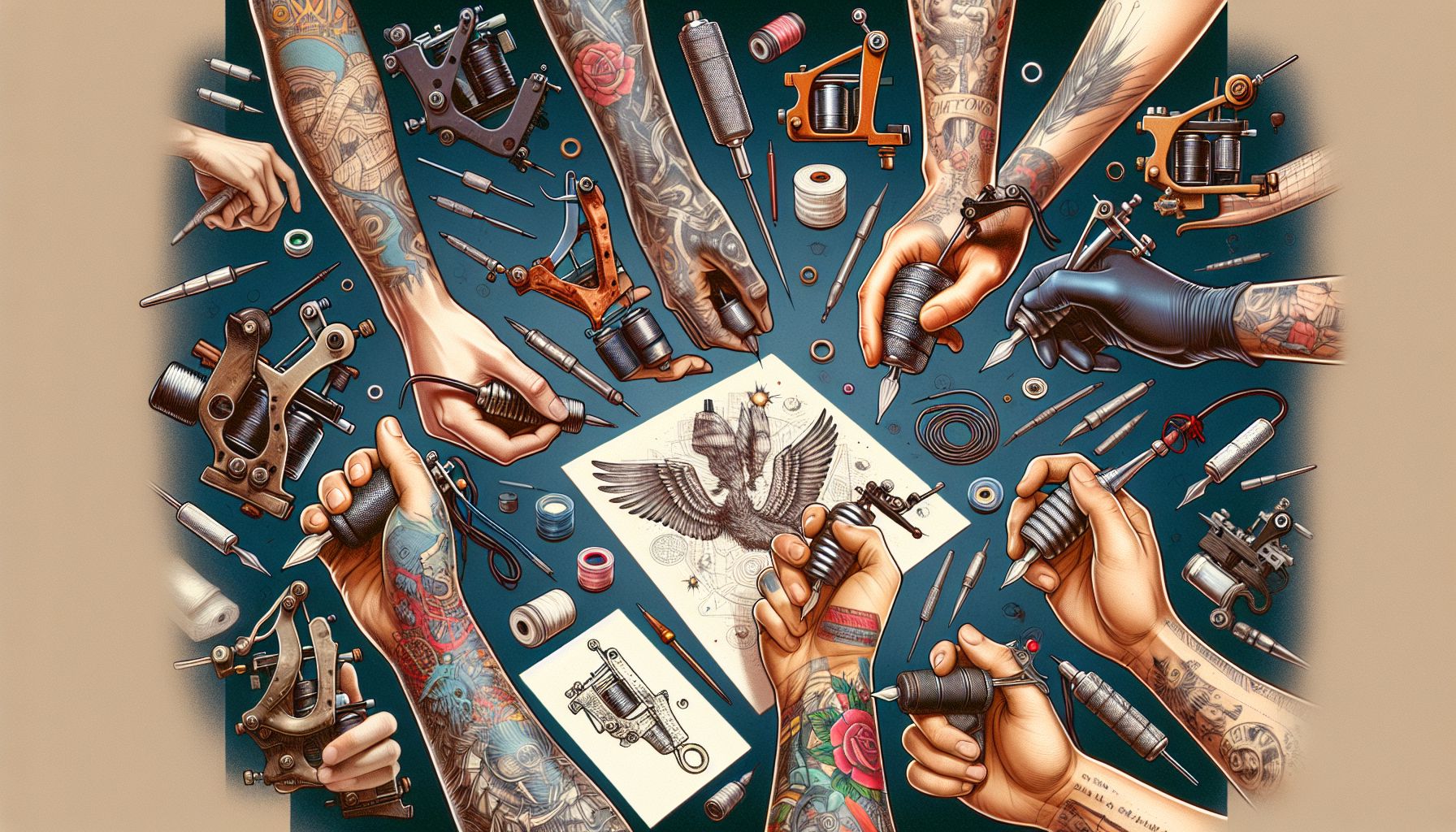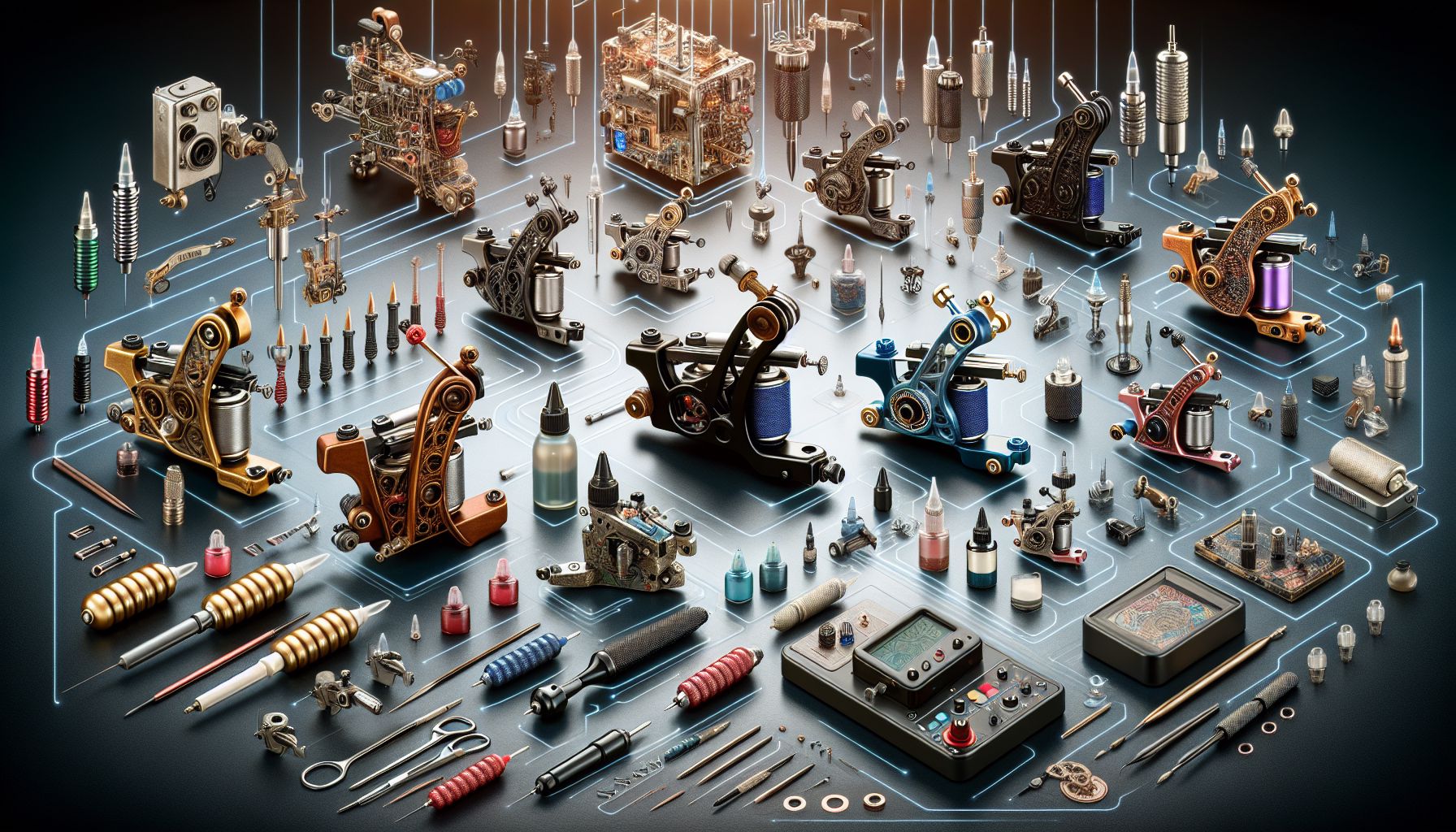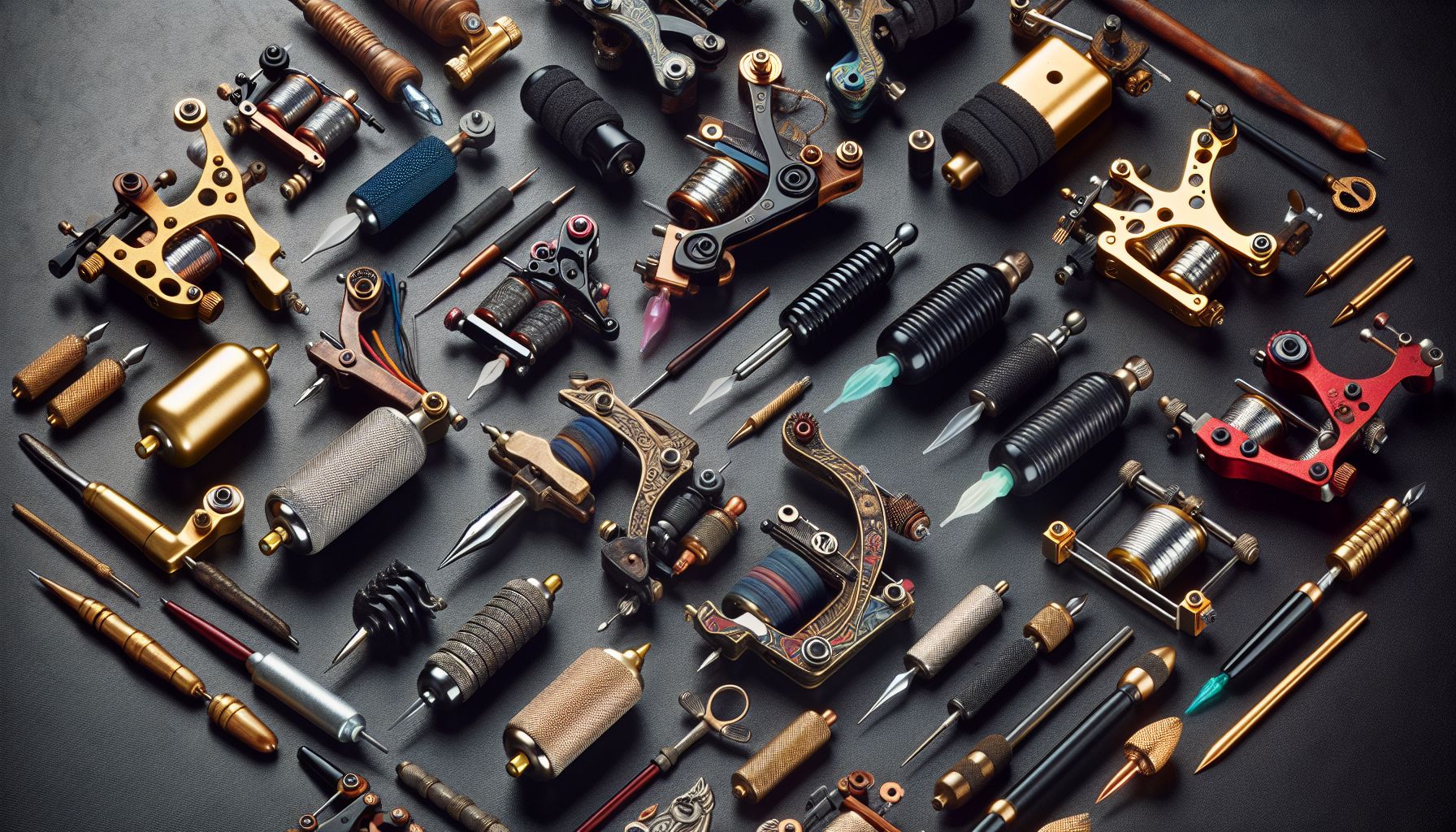Few instruments define a profession as singularly as the tattoo machine does to tattoo artists. As an integral part of your tattoo supplies, the right machine can make all the difference between a fascinating piece of art and a forgettable one. Drawing deeply from my years of first-hand experience in the industry, I’ve seen how the tattoo machine’s design and functionality have changed dramatically over the decades.
The impact of these changes on the quality of artwork we are now able to create is breathtaking. Therefore, let’s delve into the evolutionary journey of the tattoo machine, sharing how we can maximize its potentials to create captivating designs.
The Evolution of the Tattoo Machine
The first electric tattoo machine was patented in 1891 by Samuel O’Reilly. It was adapted from Thomas Edison’s design for the electric pen and could only do lining. The machine was heavy, noisy, and difficult to control, making the tattooing process painstakingly slow and often painful for the client.
Over time, improvements were made on O’Reilly’s original design to make tattoo machines lighter, quieter, and more efficient. In the late 20th century, the Rotary tattoo machine came into being. It used an electric motor to drive the needles, which ran smoother and quieter, making it the preferred choice amongst artists and clients alike.
The Coil machine entered the scene later, renowned for its precision. Each coil machine comes with an electromagnetic pair of coils and a capacitor. This combo offers artists the luxury to vary the machine’s speed and power when creating different designs. It’s no surprise, then, that coil machines have become the favored choice in many tattoo shops.
The evolution of tattoo machines didn’t stop there. Advancements in the industry brought forth the Pneumatic Tattoo Machine, which allowed versatility and enabled the sterilization of the entire machine in an autoclave, an essential breakthrough in tattoo shop hygiene.
More recently, the Rotary Pen has entered the market, which consolidates the pros of both the Rotary and Coil machines while discarding most of their cons. The machine is a having-your-cake-and-eating-it-too scenario for all artists, offering them the ultimate tool for lining, shading, and color packing. Its value addition to our tattoo supplies can’t be emphasized enough.
Tips for Choosing the Right Machine
Choosing the right tattoo machine can be a daunting task given the wide variety available. Your choice should take into consideration the type of art you specialize in, your comfort, and how much you’re willing to invest in your craft.
For beginners, I recommend starting with a Rotary machine. They are quiet, versatile, lightweight, and easy to handle. You’d learn the ropes in no time. For artists who specialize in huge color jobs or intricate lines and shades, investing in a Coil machine would be worthwhile.
It is vital to always remember that the perfect machine is what works best for you as an artist. My years working in various tattoo shops has taught me that there’s no one-size-fits-all when it comes to tattoo machines. It all boils down to personal preference and what enables you to deliver the best artistry for your clients.
The Cutting-Edge: Our Take on Rotary Pens
The Rotary Pen seems to be the ultimate game-changer in the industry. Combining the pros of both the Rotary and Coil machines, it offers a remarkable lining, shading, and coloring experience all in one device. Also, with its light weight and ergonomic design, the pen eliminates much of the hand fatigue common among artists. Its easy handling makes the transition from drawing to tattooing seamless.
For aspiring artists looking to purchase a Rotary Pen starter kit, be cautious of the numerous low-quality counterfeit products in the market. We’ve made this mistake once, and it ended up particular bad, with the pen breaking down halfway into the tattooing process – that’s a situation no artist ever wants to face. I recommend investing in a reputable brand that provides a reliable warranty and after-sales service–quality should be your priority, not price.
Navigating the Future of Tattooing
The wondrous journey the tattoo machine has traveled shows just how much potential resides in this vital tattoo supply. The sheer variety and specifications available give every artist the luxury of choice, the power to select what tools work best for them.
There’s no telling how much further the evolution of these devices would go. But as tattoo artists, we have a front-row seat to the unfolding spectacle. Combining our skills with these evolving tools would create magic. Paying close attention to their development and how they can better our craft is fundamental. From my experiences, I can confidently say that the right tattoo machine, perfectly understood and effectively used, can indeed make a masterpiece. It’s all in our hands now – or should I say, in our machines.



